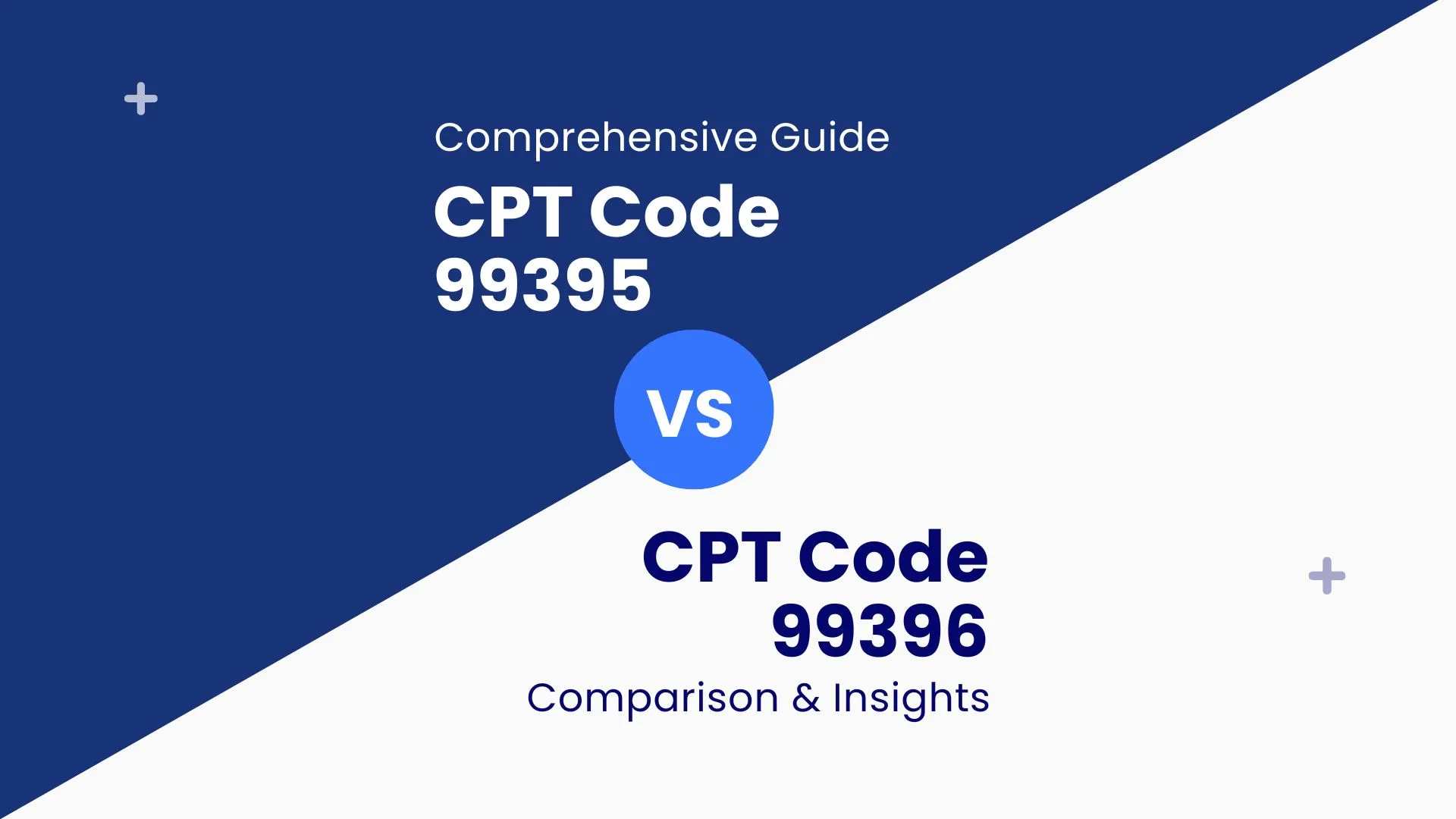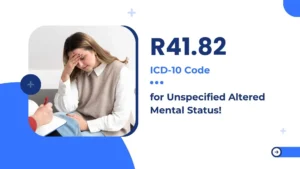Preventive visits are integral to good health. They help anticipate issues and develop a plan to ensure optimal well-being. These visits tend to be an issue for billing teams. With the right codes, these visits will get paid promptly, and there are minimal claim denials.
In this article, we focus on CPT code 99395 vs 99396. We also discuss some closely related codes for new patients, elderly patients, and routine procedures such as pap smears. This article will assist billers, hospital administrators, and clinicians in providing an instructional overview.
What are Preventive Visits and Preventive Visit Codes
Preventive Visits mean a routine checkup. These checkups help in early detection to avoid any serious problems and maintain good health. But in the case of billing, these simple visits may create a big problem. So, the CPT (Current Procedure Terminology) Code System organizes healthcare services into numerical codes. For preventive care, codes 99385-99397 cover a range of ages as well as the patient’s status as new or established. Here is the list of some important codes:
| 99385 CPT code: | New Patient, Age 18 to 39 |
| 99386 CPT code: | New Patient, Age 40 to 64 |
| 99395 CPT code: | Established patient, age ranges 18 to 39 |
| 99396 CPT code: | Established Patient, Age 40 to 64 |
| 99397 CPT code: | Established patient, age is 65 or more than 65 |
Here we will discuss the transition from 99395 to 99396 as patients age into a new bracket, while also showing the other codes for context.
If you’re a provider in Minnesota navigating complex preventive visit billing like CPT codes 99395 and 99396, our expert Medical Billing Service in Minnesota can help ensure accurate coding, fewer denials, and faster payments.
Why Age and Status Matter
Age and status of the patient (new vs. established) dictate which code to use. A claim with the wrong code has the potential of being denied. For instance, billing CPT code 99396 for a 37-year-old is not suitable.
New Patient codes apply only when the patient has not seen any provider in the group during the past 3 years. But if they are returned to the provider after 1 or 2 years, they are considered established.
Preventive visitors in the age range of 18 to 39, the 99395 CPT code should apply. When they turn 40, their visit code should become 99396. This change indicates that the patient has turned 40 and requires different counseling and screening, which is based on their age.
In-Depth Look at CPT Code 99395 vs 99396
CPT Code 99395: Established Patients (age 18-39)
- Covers the history review, examination, and risk counseling.
- Common services include: lipid panel, BMI, and tobacco.
- Does not include sick visits or chronic disease management.
99396 CPT code: Established Patients (40-64)
- Includes all elements included in 99395 and adds other screenings according to age.
- Colon cancer screening, mammography referrals, and other bone density discussions are included.
- Lifestyle recommendations include diet, exercise, and stress management.
- Both codes require that the patient come with a purely preventive visit. If the patient presents with an additional health concern, then a different E/M code will be used.
Here is a quick comparison between 99395 and 99396 to understand differences and similarities between these two codes.
| Features | 99395 CPT code | 99395 CPT code |
| Code description | Individuals aged 18 to 39 who have periodic comprehensive preventive medicine evaluations | Individuals aged 40 to 64 who have periodic comprehensive preventive medicine evaluations |
| Age limit | 18-39 | 40-64 |
| Type of visit | Preventive (routine Checkup) | Preventive (routine checkup) |
| Not covered for | Special visit related to a problem | Special visit related to a problem |
| Services included | History, examination, and counselling | History, examination, and counselling |
| Billing frequency | Once a year | Once a year |
| Payer coverage | Often covered by insurance as preventive care | Often covered by insurance as preventive care |
Adding Preventative Tests: Including Pap Smears
Some visits for preventive care come with accompanying routine tests, which is the case for the Pap smear. The pap CPT code is contained in its own category alone. You bill your examination with 99395 or 99396 and append the Pap code when the examination has been completed.
These may include:
· Screening for blood pressure.
· Vision screening.
· Hearing screening.
Each of the individual tests comes with its own coding. Always append them separately to avoid ambiguity.
Maintaining Best Practice with Documentation
Notes need to be good for the proper billing process. They defend every service that has been taken and billed. Make sure to incorporate the following.
· Stated concern or issue for the appointment – State that it is a preventive examination.
· Patient’s History – detailed history of family members and individual risk factors.
· Exam findings – Some of the vital signs, physical findings.
· Counseling – Topics covered like nutrition or smoking.
· Tests Ordered or Performed – Include the name of the screenings and add to it the name of their results.
Consider using templates or checklists to make notes more organized. An organized method minimizes mistakes and quickens the auditing process.
Handling Modifiers
In some cases, both preventive and problem care may be addressed during the one visit. In that case, submitting the claim is as follows:
· 99395 or 99396 for the preventive portion.
· An appropriate E/M code (such as 99212–99215) for the problem.
· Add modifier CPT code modifier 25 to the E/M code to specify it was a separate service.
Documenting each part is very important for payers.
Insurance and Payer Policies
Coverage policies differ from one insurer to another. Preventive codes are covered in full by most commercial plans and the ACA. However, Medicare has different rules and does not accept 99396 for AWV. Always check:
· Coverage limits (one visit per year)
· Year definitions (calendar vs rolling 12 months)
· Required preventive screenings by age
Patient eligibility should be verified before the service is billed.
Common Pitfalls and How to Avoid Them
· Wrong age code: Ensure birth dates are accurate.
· New vs established mix-up: Check for correct classification in EMR.
· Missing modifier: Use modifier 25 CPT when applicable.
· Incomplete notes: Documentation covers only the elements insufficient.
You can catch these issues by running regular audits within the billing department.
Using Technology to Your Advantage
Coding associated with the clinical documentation is suggested with modern EHRs. While these tools can be helpful, caution should always be exercised:
· Carefully review suggested codes
· Confirm and double-check the age and status of the patient manually
· Adjust for quirks by individual payers
Templates and macros aid providers by passing them through the required exam steps and thus speeding up documentation.
H2: Cooperation with Clinical Personnel
As with everything in healthcare, accurate billing is collaborative. Billing personnel are required to:
· Educate providers on the common denial share.
· Conduct short training sessions on preventive coding.
· Provide feedback to improve note quality through closed loops.
All clinicians need to appreciate billing work, and all coders need clear clinical documentation.
For example, when dealing with preventive care visits that also uncover underlying conditions like gout, proper diagnosis coding becomes essential. Make sure to pair your preventive CPT codes with accurate ICD-10 codes when applicable. Check out our detailed 2025 billing guide for ICD-10 Code M10.9 – Gout, Unspecified to avoid errors and improve claim accuracy.
Closing Remarks
The focus for preventive visit billing from 99395 to 99396 is detailed. A provider must master their patient’s age and status. Each step of the preventive exam needs documentation. Add-on tests, such as Pap smears, should only be added if performed. Modifiers need to be properly utilized, and payer rules have to be verified.
Following the recommendations in this guide enables a billing team to improve the denial rate, accelerate the collection cycle, and enhance the patient care continuum. Everyone benefits from unambiguous codes: patients, providers, and healthcare professionals shift their focus toward health instead of paperwork.




